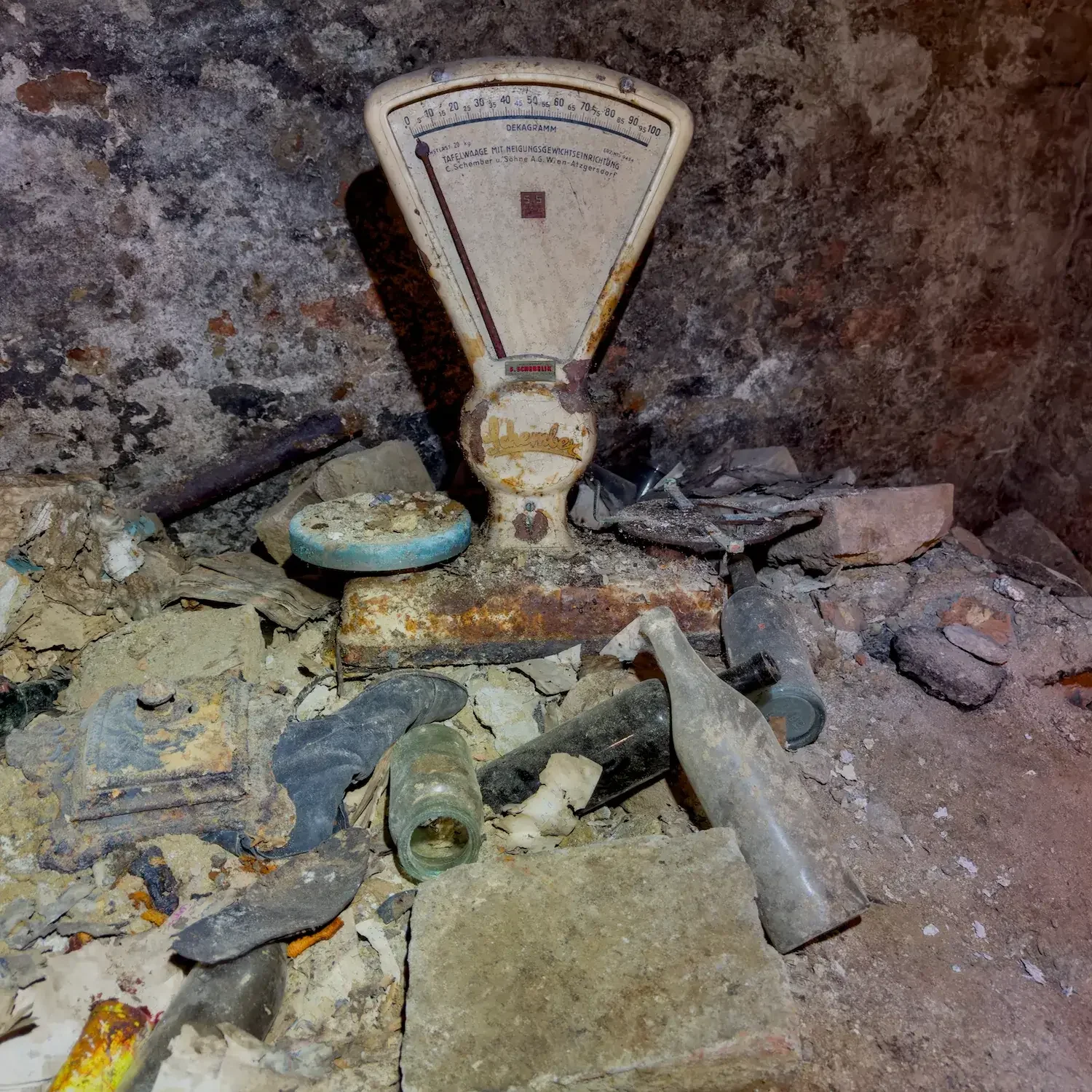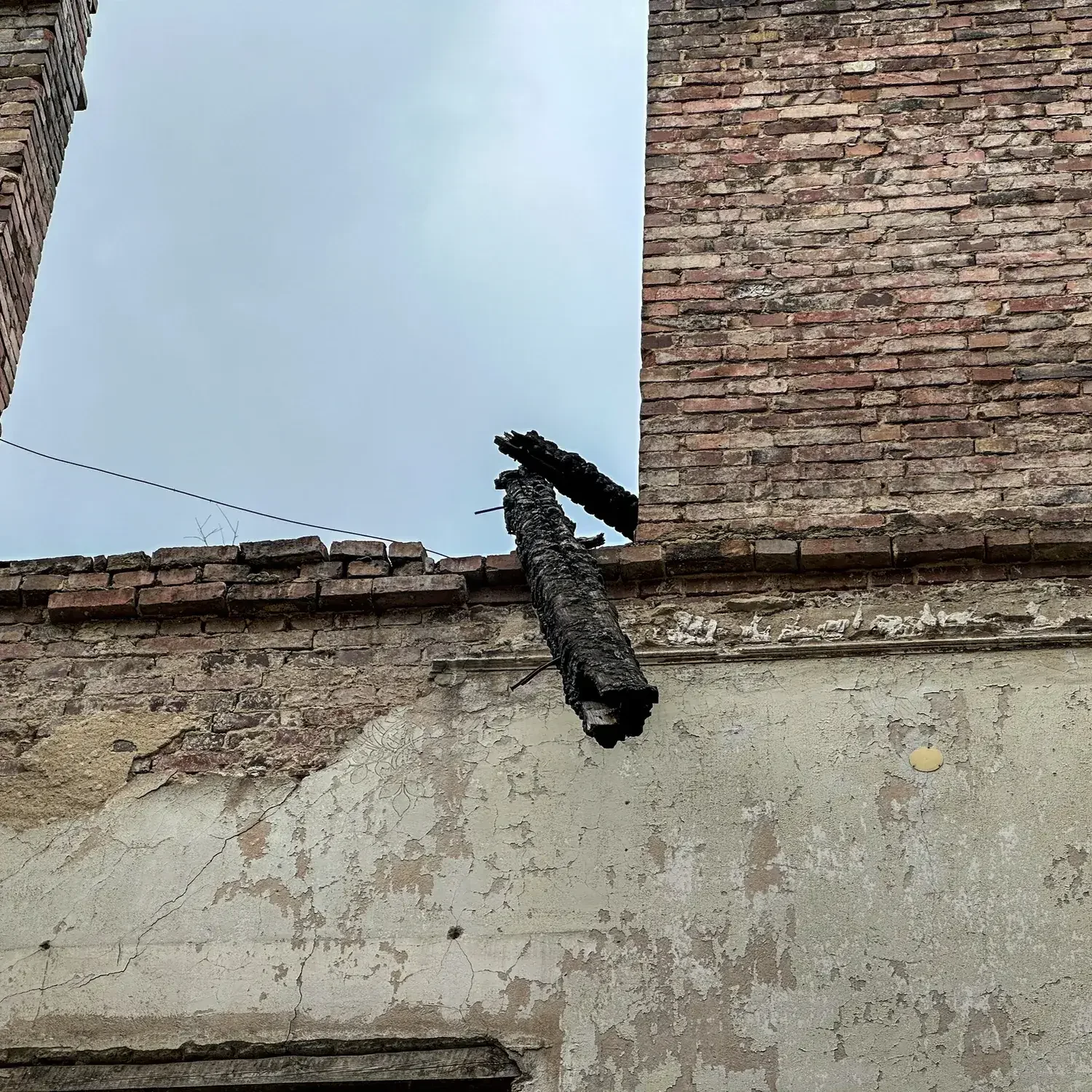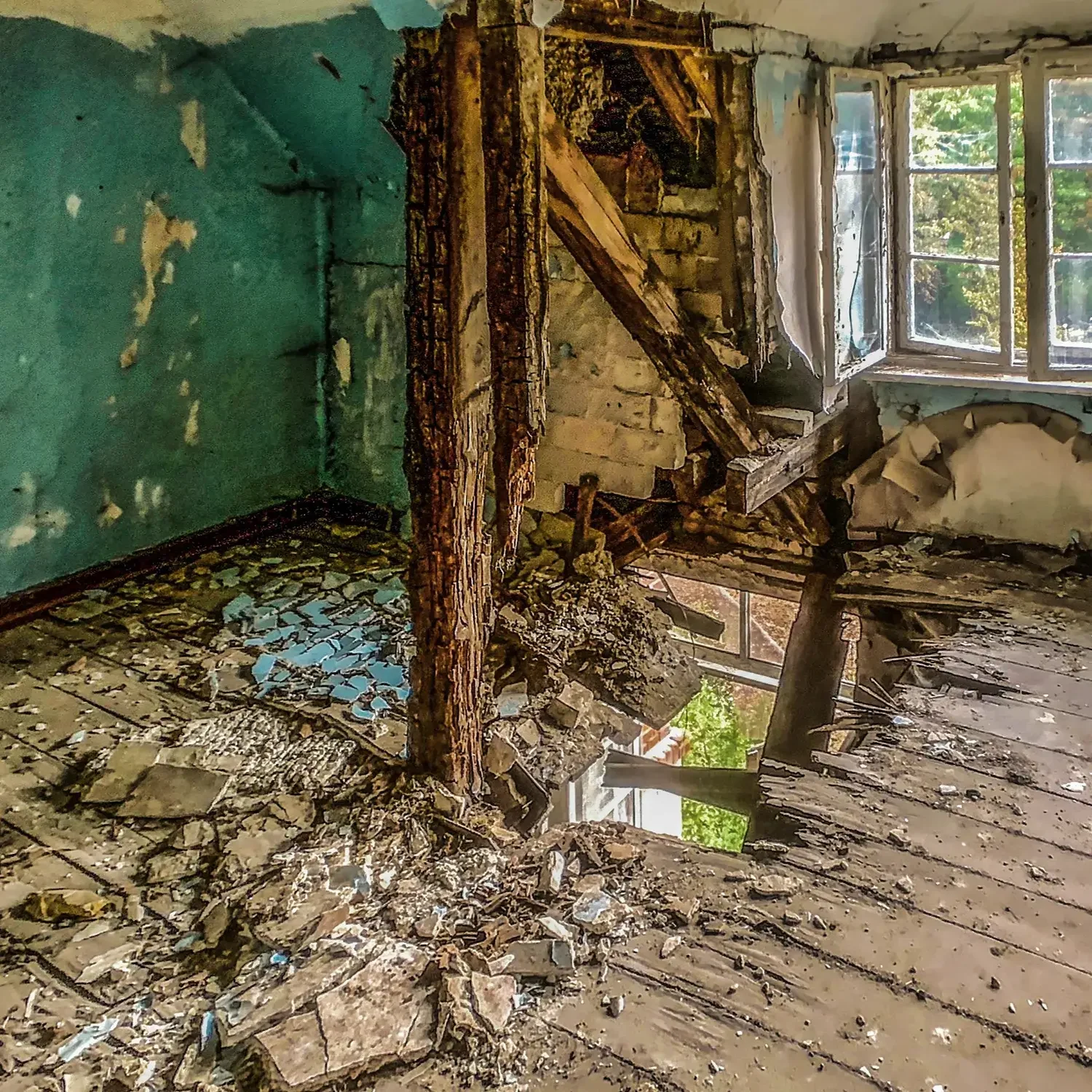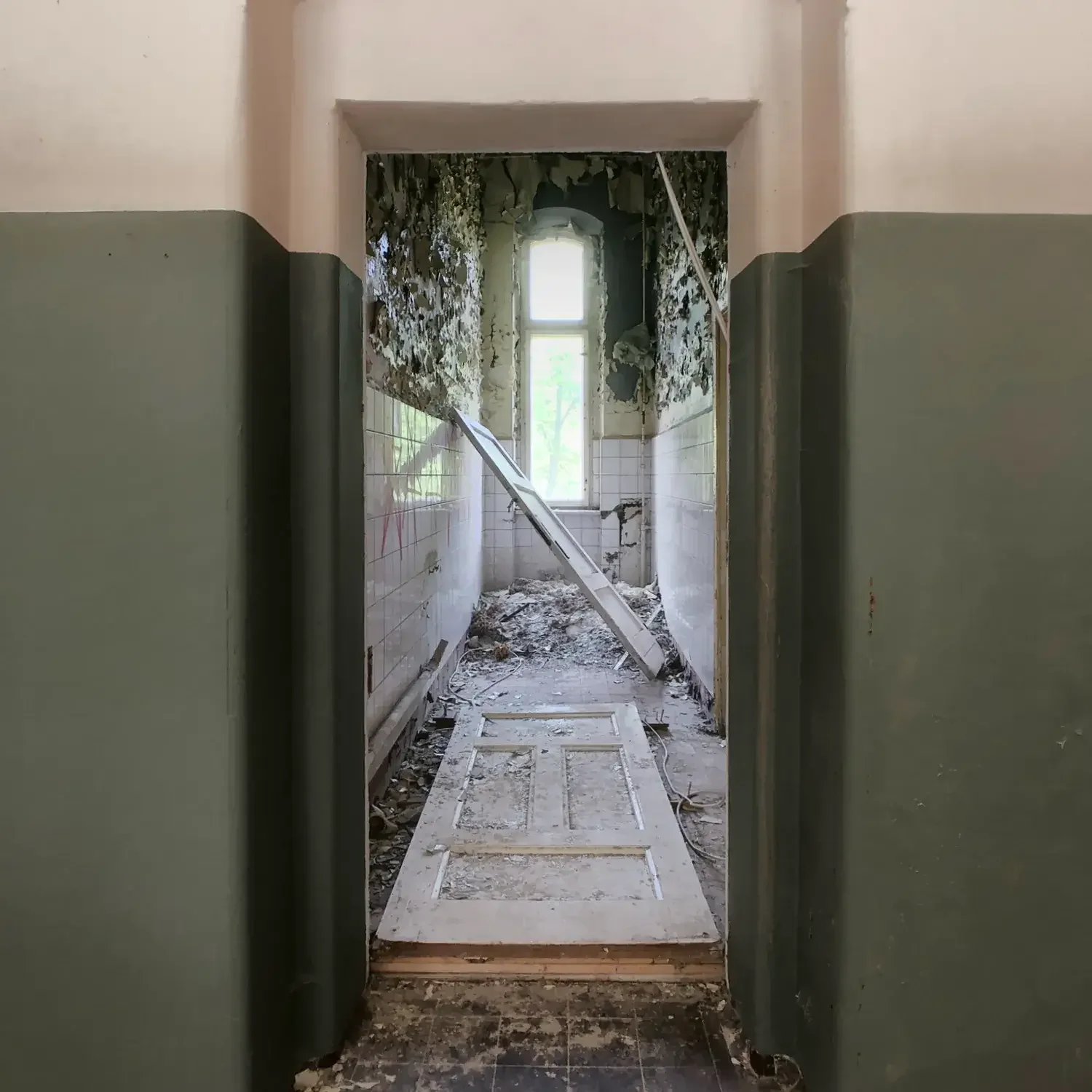10 urbex rules to ensure a safe experience when exploring a lost place
Urban Exploration (also known as “Urbex”) is a fun and adventurous hobby for photographers. The beauty of decay creates lots of great photo opportunities. But this hobby can be dangerous. To minimize the risk, I’ve compiled a list of rules that I have imposed on myself when planning a trip to a lost place.
- Facets of Urban Exploration
- My self-imposed Urbex Rules
- Ask for permission
- Be Polite to Locals, Security and Police
- Take nothing but photos, leave nothing but footprints
- Never go alone
- Look up if something could come down
- Eyes are always in the walking direction
- Dress for Safety First, the Weather Second
- Avoid Wet areas like Hell
- Do not open Windows (and some Doors)
- Be prepared to encounter Animals
- Recommended Equipment I use for Urban Exploration
- Summary
Facets of Urban Exploration
Urbex has many facets. The term refers to exploring structures that are usually not accessible to the public. Such structures can be abandoned buildings but also sewers and storm drains, subway tunnels, and parts of buildings that are still in use but not accessible to the public like rooftops.
In this article I cover my self-imposed rules for exploring abandoned buildings and places. I don’t visit sewers, subway tunnels, or rooftops.
My self-imposed Urbex Rules
Ask for Permission
This is probably one of the most important rules. Even if a place or building is abandoned, it still belongs to someone. If you don’t have permission to explore it, you may violate the law (e.g., unauthorized trespassing). So to get permission to explore an abandoned building there are basically two ways:
- Do your research and find the owner. Ask for permission in written and signed form and carry it with you so you can present it to the police or security personnel if they stop you. That’s the difficult way.
- The easy way is to simply book a tour, whereas the term 'tour' is a bit of an exaggeration. There are companies that handle all the legal paperwork with the owner and will unlock a property for a limited number of people. After a brief introduction, you’ll have hours to explore the property on your own. You’ll find a few tour operators linked throughout this article.
One of my favorite urbex tour operators is go2know, a company from Berlin. I’ve booked tours with them since 2012. Here’s a photo from my first urbex tour with them in 2012 at the famous Beelitz Heilstätten.
Beelitz Heilstaetten photo tour with go2know
I’ve summarized my photos from the three tours with them in a dedicated article about photographing at the Beelitz Heilstätten. Check my page of urbex tours I've attended for more inspiration for lost places you can visit legally.
If you find the owner yourself and try to sign an agreement with them, here are a few things that the agreement contains:
- A small “request processing fee”
- Right to have a say which photos I may publish. I usually state that I’ll send about 10-15 photos where the owner has to approve at least 7 photos.
- I guarantee to remove GPS data from photos and photograph in a way that does not reveal the location of the property. I even agree on a generic name like “abandoned palace in Austria”
- I guarantee to enter the property at my own risk and hold the owner harmless if I hurt myself.
- The exact time and date when I’ll visit the property
- The name and phone number of the owner (important when presenting the permission to authorities)
These are just a few ideas that you can use to do the paperwork with the owner of a lost place. Last year friends of mine were caught illegally exploring a lost place. The penalty they got was hefty (a penalty in the four figures).
To avoid legal issues, I recommend attending a legal urban exploration tour like the ones I list on my overview page of urbex tours.
Be Polite to Locals, Security and Police
As you do have permission (right?), be friendly and polite to people approaching you and asking what you’re doing here. Mention that you do have permission to visit and explore the lost place, and mention the name of the owner.
If you’re caught by security or police, show them the permit you’ve obtained from the owner. To make things easy in such a situation, I make sure the name and phone number of the property owner is mentioned in the permit. That way, security or police can call them right away and clarify things.
Under no circumstances run away if you have permission. That will make you look guilty, and police may use force to restrain you.
Take Nothing but Photos, Leave Nothing but Footprints
This is the golden rule of Urbex. As “Urbex” stands for “exploration”, please act like an explorer by observing and photographing (documenting) your findings. Do not move anything around and do not remove anything. People who remove things are thieves. Don’t be the thief, be the explorer.
Secondly, you may carry snacks and something to drink on your urban exploration tours. As a rule, do not leave any litter in the lost place. Take it with you and dump it in the appropriate places. Leave nothing but footprints also means not to leave graffiti or any other sign of your visit.
So make sure to leave the lost place as you find it. This way you’ll ensure that other urban explorers have the same enjoyable experience as you. You’d like other explorers to behave the same way, wouldn’t you?
Never go Alone
This is called the double rule for exploring abandoned buildings. It’s similar to the buddy principle in scuba diving. Never ever go alone to explore an abandoned building. Always have someone with you.
However, this buddy principle doesn’t make much sense if you both enter the same room or use the same stairs side by side. The best and safest way for urban exploration with a buddy is the “one after another” principle.
One of you explores a room or walks up the stairs. Then it’s the turn of the buddy. This way your buddy can call for help if you get injured.
Old scale photographed during a paid underground tour in Vienna
The above photo is from a Vienna underground tour in Vienna with a dozen of people lead by urban explorer Jerryously. In these cellars, you’re 20 feet below the ground. No cell phone works down there, and if something happens, no one will probably ever find you if you go alone.
Additionally, I recommend telling a trusted person where you are and defining a deadline. If you haven’t reported back by that deadline, the trusted person should call for help.
Look up if Something could Come Down
Lost places tend to be unstable. The roof or an upper floor may have collapsed already. So the first thing I do before I enter the building and a room inside a building is to look up if there’s something that could come down.
Urbex rule: Look up if there is anything that could come down
If there is, either avoid entering the room or try to walk around it. The above photo shows a burnt piece of wood of the roof of an abandoned house near the abandoned textile factory in Forst-Lausitz. That doesn’t look safe, and so I avoided the area where this piece could come down.
Eyes are Always in the Walking Direction
Each year I read about half a dozen reports that someone either died or was heavily injured during an urban exploration. The main reason is that they eg. took one or two steps backwards without looking to get a better photo.
So as another important rule for urban exploration, please always have your eyes in the direction you walk. Never ever take a step back without looking.
Dress for Safety First, the Weather Second
Lost places are full of broken glass, rusty nails, and thin wires hanging from the ceiling. Even a small scratch from a rusty wire can have severe consequences. It’s actually simple to avoid that. So as a rule for Urbex:
- Wear shoes with a thick sole. I usually wear hiking boots with a sole that's between 0.6 and 0.8 inches thick. That protects my feet from glass splinters and other debris lying on the floor.
- Long sleeves are a must no matter how hot it is outside. In underground locations like bunkers, you may even have a different “climate zone”. Down there it may be humid and cold while the outside weather is hot and dry. I recommend dressing in layers.
- Long and robust trousers are also a must for the same reasons as long sleeves. I bought a pair of work trousers with numerous pockets for urban exploration. These are definitely not cheap, but your health should be worth the expense. Alternatively, you can wear jeans, too.
Additonally I recommend bringing the following items for your lost place exploration:
- FFP3 masks, especially when exploring abandoned bunkers. These tend to be humid places where white and black mold find excellent growth conditions. Especially black mold can be dangerous when inhaled in larger amounts. So as a rule, wear an FFP3 mask when exploring places below the surface and look out for black mold. Also, you’ll encounter asbestos in old abandoned buildings. It was used as an insulation material, typically in ceilings, roofs, and around heating or hot water pipes. If you see it, wear your FFP3 mask immediately.
Avoid Wet Areas like Hell
Water and humidity are natural enemies of abandoned buildings. If a building is not heated anymore, the humidity crawls into the masonry, causing cracks. They also cause wood to rot and steel to rust. So if you explore a lost place with broken windows and a damaged roof or place below the surface, I follow these rules:
- Avoid wooden floors or stairs if I see signs of humidity or water.
- Be cautious if steel stairs are rusty
- Walk carefully on smooth floors. Even the slightest humidity can make them slippery.
Collapsed wet floor at Grabowsee
This photo from the abandoned sanatorium Grabowsee illustrates what I mean. Rain came in through the open window and caused the floor to collapse over time.
As a bonus tip: If you need to climb stairs, do not step in the middle of the stairs. Step on the side where they’re attached to e.g. the wall.
Do not Open Windows (and Some Doors)
Old buildings typically have window and doorframes made of wood. As I’ve explained in the last chapter, humidity can easily cause the wood to rot. Thus, if you try to open the window, it may simply fall out of its frame and on you. This may cause severe injuries either by the weight of the window or the glass that may break.
Not properly attached door
The same applies to some extent to doors, especially bunker doors. Check if they’re still attached properly and open them in a way so they can’t fall on you when the hinges break. The above images show such a door I mentioned.
Be Prepared to Encounter Animals
Animals tend to make abandoned buildings their new home. These can be anything from small insects like mosquitos to spiders and lizards, birds and even larger animals like deers, bears and wild boars. I once encountered wild boars at an abandoned airport. That was a tense situation.
These animals made an abandoned building to their territory and they’re going do defend it. For example, pigeons can be quite aggressive, especially when they want to protect their nestlings. The same applies to wild boars when they protect their baby boars. So my rule here is that if I see larger animals or birds in a lost place I just leave the area. Defending yourself against half a dozens birds attacking you or even a single wild boar is not worth it.
Recommended Equipment I use for Urban Exploration
In addition to the above Urbex rules I’ve self-imposed, I carry the following equipment to make sure my lost places tour is an unforgettable experience.
- At least two fully charged flashlights. One of them should be able to emit at least 5.000 to 7.000 lumens continuously. I use the Wuben X1 as my primary flashlight for exploring lost places. It has multiple brightness levels and a turbo mode that creates a 12.000 lumen beam. You can read more about it in my Wuben X1 review. The second flashlight is a smaller one from Olight that I use as a backup when my Wuben X1 runs out of power.
- A fully charged phone to take photos and to make emergency calls just in case. Just note that if you enter a bunker without cell phone coverage, your phone’s battery will drain a bit quicker because it always tries to find a signal.
- Two fully charged powerbanks. I use two different Anker MagSafe models. You can read about them in my Anker MagSafe powerbanks review.
- A first aid kit that allows you to treat small wounds like scratches, etc. Hiking first aid kits are ideal for that.
- A tripod or a monopod for taking pictures in bad light conditions. For taking photos in total darkness, you may want to check my tutorial about how to take photos in darkness with iPhone.
- Something to eat and to drink
- A bag to carry all the stuff you need
Summary
I’ve been doing urban exploration since 2012. It’s a fantastic hobby for photographers. However, exploring lost places can be dangerous. In the above article, you’ve read about the 8 rules for Urbex I’ve imposed on myself.
They help me to stay safe and to be able to continuously explore lost places, which you can read about in my blog.
If you plan a trip to Berlin, be sure to check out my list of lost places in Berlin you can visit legally. If you’re going to New York, I recommend booking a hard hat tour at the abandoned immigration hospital on Ellis Island. And if you’re planning to come to Vienna, you may find the abandoned cellar tours in Vienna and the former World War II bunker tour in Vienna interesting.
Care about some quick feedback about this article?








